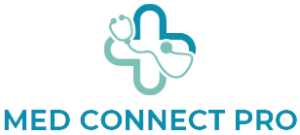In the fast-paced world of digital design, tools that blend creativity, efficiency, and performance are highly prized. Among these, framer.website has emerged as a standout platform, offering designers and developers an intuitive way to craft interactive, high-fidelity prototypes. Unlike traditional design tools that emphasize static mockups, Framer empowers users to build dynamic and engaging interfaces that mirror real user experiences.
One of the most compelling features of Framer is its focus on real-time interaction. The platform allows designers to see their work come to life instantly, providing a feedback loop that enhances creativity and reduces development time. This real-time functionality is particularly valuable in collaborative settings, where team members can make adjustments and visualize results without waiting for code or handoffs. Framer supports this through a powerful combination of design tools, prototyping features, and code integration, all under one roof.
The evolution of Framer from a code-heavy prototyping tool to a more user-friendly, no-code environment has opened the doors for a broader audience. While developers still appreciate the flexibility of using code when needed, non-technical designers now have the freedom to create robust prototypes without writing a single line. This shift reflects a growing trend in the industry toward democratizing design, and Framer is at the forefront of this movement by bridging the gap between design and development seamlessly.
Designing in Framer offers a level of interactivity that static wireframes simply can’t match. Users can add animations, interactions, and even real data into their prototypes to simulate how a product will behave in the real world. This ability to mimic live environments allows stakeholders to test user flows and catch issues early in the design process. By doing so, Framer helps reduce the risk of costly revisions later in the development cycle, making it a smart choice for agile teams.
What sets Framer apart from other tools is its seamless integration with code. Unlike many no-code platforms that create limitations when advanced features are needed, Framer offers the flexibility of incorporating custom components via React. This unique capability ensures that prototypes remain as close as possible to the final product, saving time when moving into full development. Developers find this feature especially helpful, as they can reuse or adapt Framer code directly, streamlining the handoff process.
Another key strength of Framer is its powerful collaboration features. With remote work becoming more prevalent, tools that support real-time, cloud-based collaboration are essential. Framer enables multiple team members to work simultaneously on a project, comment directly on components, and make live changes. This level of integration not only speeds up workflows but also fosters better communication between designers, developers, and stakeholders.
User experience is central to any design process, and Framer places a strong emphasis on usability and performance. The platform’s interface is clean, intuitive, and designed with modern workflows in mind. From drag-and-drop components to reusable design systems, Framer equips teams with everything they need to build scalable products. Its thoughtful UI ensures that users of all skill levels can get started quickly, while also providing advanced features for professionals who want deeper control.
For those involved in product design, marketing sites, or mobile app interfaces, Framer offers versatility that’s hard to match. Designers can prototype responsive layouts, interactive navigation menus, and even transitions between screens — all within a single environment. This all-in-one approach reduces the need to juggle multiple tools, allowing teams to stay focused on what matters most: crafting great user experiences.
Education and community also play a major role in the success of Framer. The platform boasts a vibrant ecosystem of designers, developers, and educators who contribute tutorials, templates, and plugins. Whether you’re a beginner looking to get started or a seasoned professional seeking inspiration, the Framer community offers support and resources to help you grow. Additionally, the Framer team regularly updates the platform, ensuring it stays at the cutting edge of design technology.
In conclusion, Framer has positioned itself as more than just a prototyping tool — it’s a full-fledged design platform that adapts to the evolving needs of modern digital teams. Its emphasis on interactivity, code flexibility, collaboration, and user-centric design makes it a valuable asset in any creative workflow. As digital products become increasingly complex, having a tool like Framer that combines power and simplicity can make all the difference in delivering exceptional user experiences.
